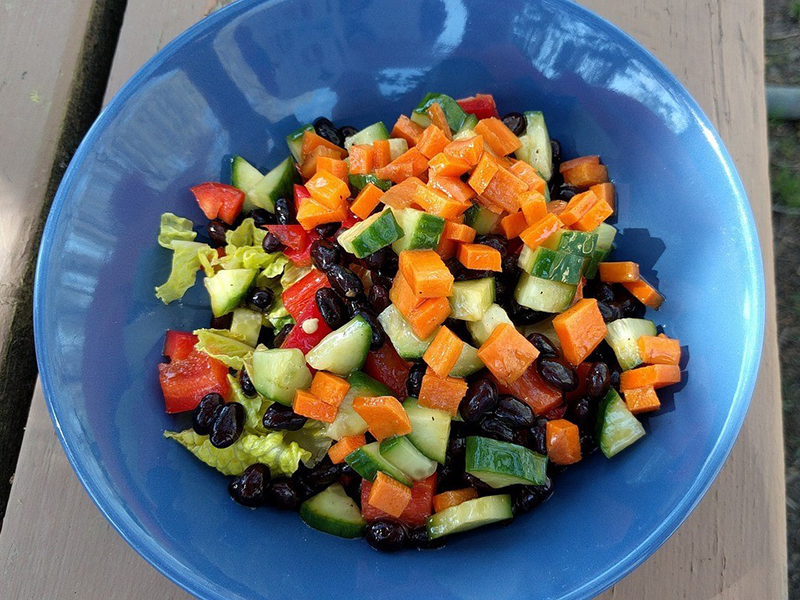
Have you ever wondered what blood pressure is, how it can affect you and your health, and what you can do to make simple dietary and lifestyle changes to support healthy blood pressure in yourself and your clients?
What is Blood Pressure?
When your heart pumps blood through your arteries, the force of the pumping blood puts pressure on the artery walls. This is known as blood pressure. The upper reading, systolic pressure, is the maximum force that the blood exerts on the artery wall when the heart contracts and diastolic pressure, the lower number, is the pressure when the heart relaxes. An ideal blood pressure reading should read 120/80 or below. High blood pressure increases the risk for heart disease and stroke, two leading causes of death for Americans. High blood pressure is very common. Tens of millions of adults in the United States have high blood pressure, and many do not have it under control or are not aware that they have it. High blood pressure is also known as hypertension.
Interesting Facts About Blood Pressure
Hypertension may be linked to dementia: Recent studies show that high blood pressure, especially in the age group of 44-66 years may increase the risk of dementia, which is the loss of cognitive function in the later years.
Young people can have high blood pressure too; nearly one in four adults in America in the age group of 20-44 years have hypertension, the leading cause of stroke, which can lead to disability or death.

High blood pressure is called the ‘silent killer’ as it generally does not have any symptoms. Most people feel fine and do not see any need to get it checked by their doctors. One in three people in the U.S. with elevated blood pressure are unaware of their condition and hence do not get any treatment for it.
Women and African Americans face unique risks when it comes to high blood pressure – Women with high blood pressure who become pregnant could develop complications during pregnancy and this can result in kidney damage in the mother and lower birth weight of babies. African American men and women are at an increased risk of stroke due to high blood pressure due to a variety of factors.
Lifestyle Changes That Help With High Blood Pressure
The good news is that there are many lifestyle changes that can help with high blood pressure:
- Getting at least 150 minutes of physical activity each week (about 30 minutes a day, 5 days a week)
- Not smoking
- Eating a healthy diet, including limiting sodium (salt) and alcohol
- Increasing intake of potassium and magnesium containing foods
- Keeping a healthy weight
- Managing stress
A colorful salad high in magnesium and potassium: It’s not just the veggies in this salad that are high in potassium and magnesium but the vinaigrette too. It’s made with flax seeds, chia seeds and pumpkin seeds.
Anita’s Rainbow Salad
This is a nice, colorful salad full of crunch and flavor. It can be eaten as a side or a meal itself by adding some quality protein to it.

INGREDIENTS
Salad
- 1 English cucumbers
- 1 head of romaine lettuce
- 4 stalks of celery
- 4-5 olives
- 1-2 bell peppers (different colors)
- ½ red onion
- 1 avocado
- 3 Tbsp pumpkin seeds
Vinaigrette
- Juice of 1 lemon
- 2 Tbsp balsamic vinegar
- 2 tsp nutritional yeast
- ½ tsp sea salt or pink salt
- ½ tsp black pepper
- ½ tsp favorite seasoning mix
- ½ tsp garlic powder
- ½ tsp onion powder
- 1 Tbsp chia seeds
- 2 tsp flax seeds powder – cold milled
- ¼ cup extra virgin olive oil
INSTRUCTIONS
- Put all the ingredients in a big bowl
- Prepare the vinaigrette separately and pour into the salad and toss.
Nutrition Information:
This salad is rich in fiber, potassium, magnesium, good fats, vitamins and minerals.
The fiber in the salad will help with blood sugar regulation which in turn helps with minimizing the chances of developing high blood pressure. Vegetables in general are high in magnesium and potassium. Our daily intake of potassium should be around 4900 mg which most of us fail to reach. For a general idea, one banana has about 300 mg of potassium. Magnesium and potassium help with muscle function, as they relax the walls of the blood vessels. This helps with lowering blood pressure and protecting us against muscle cramps.
References:
- https://www.cdc.gov/bloodpressure/5_surprising_facts.htm
- https://www.health.harvard.edu/heart-health/key-minerals-to-help-control-blood-pressure
Have Work You Love
Get the details on how to become a Holistic Chef or Nutrition Consultant through Bauman College’s ONLINE programs! Contact us to connect with an Admissions Representative today.